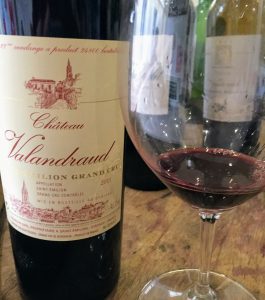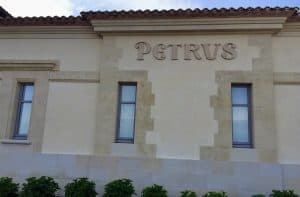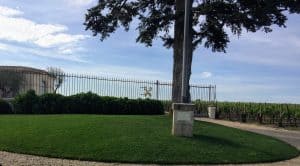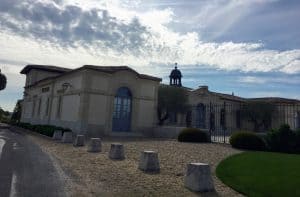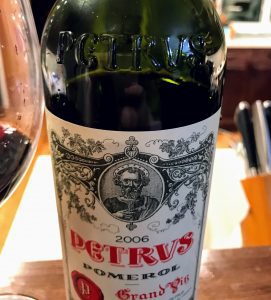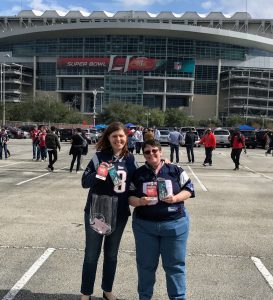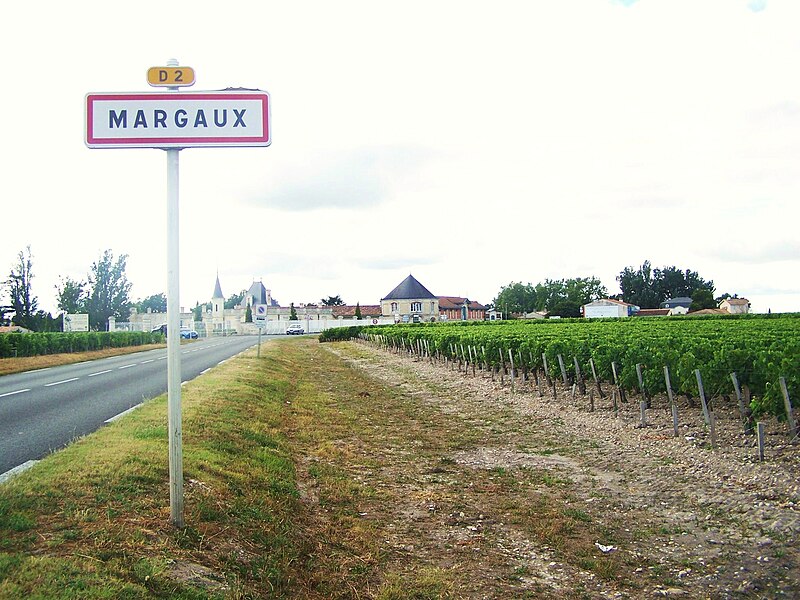 We are heading to Margaux as we continue our exploration of the 2017 Bordeaux Futures campaign.
We are heading to Margaux as we continue our exploration of the 2017 Bordeaux Futures campaign.
After hitting a rough patch in Pomerol for our last post, we are hoping to find more values in the offers from the 3rd Growth estates of Ch. Malescot-St.-Exupéry and Cantenac-Brown, 4th Growth Ch. Prieuré-Lichine and the 2nd Growth Ch. Lascombes.
If you are new to the series, a great place to start is with our first Bordeaux Futures 2017 post covering the offers of Palmer, Valandraud, Fombrauge and Haut-Batailley that lays out the general outline for our approach to buying futures in this vintage and the use of critic scores. You can also check out the links at the bottom of the page for previous posts in this series.
Now onto the offers.
Ch. Malescot-St.-Exupéry (Margaux)
Some Geekery:
Since its founding in 1616, Malescot-St.-Exupéry has been owned by several well-connected Bordeaux families beginning with the Escousses family who were notaries for the Bourbon kings of France. In 1697, Simon Malescot, the attorney general of King Louis XIV, purchased the estate and affixed his name to the property.
The second-half of the patronymic came in 1825 when Comte Saint-Exupery acquired Chateau Malescot and added the vineyard holdings of Chateau Loyac and Chateau La Colonie that he received from his wife’s dowry. When Saint-Exupery died in 1853, Malescot-St.-Exupéry was sold to the Fourcade family who added the motto Semper Ad Altum, meaning “Always reach higher”, to the labels that is still prominently featured on bottles of Malescot-St.-Exupéry today.

The chateau of Malescot-St.-Exupéry
Not long after the estate was classified as a 3rd Growth in the 1855 Classification, the owners purchased fellow 3rd Growth Château Dubignon, absorbing all its vineyard holdings and shuttering the cellar.
The modern history of Malescot-St.-Exupéry began in 1955 when it was purchased by the Zuger family, former owners of Marquis d’Alesme. The estate is still owned by the family today with Michel Rolland consulting.
Located on the right side of the D2 highway, the vineyards of Malescot-St.-Exupéry neighbor those of Ch. Margaux and the 2nd Growth Rauzan Segla.
The 2017 vintage is a blend of 58% Cabernet Sauvignon and 42% Merlot. Usually around 9000 cases a year are produced but in 2017 Malescot St. Exupéry lost nearly 20% of its plantings to frost damage.
Critic Scores:
95-96 James Suckling (JS), 91-93 Wine Advocate (WA), 91-93 Wine Enthusiast (WE), 91-93 Vinous Media (VM), 90-93 Wine Spectator (WS), 93-95 Jeff Leve (JL)
Sample Review:
The 2017 Malescot St. Exupéry has a simpler bouquet than recent vintages with high-toned red cherry and raspberry fruit, quite ‘warm’ compared to its peers and it would benefit from a little more delineation. The palate is medium-bodied with fine tannin. It is not a complex Malescot St. Exupéry but I admire the balance and focus. There is plenty of tightly wound red berry fruit laced with cedar and smoke, quite finessed towards the finish with a long spicy aftertaste. I would just like the aromatics to step up to the grade of the palate, so let’s see how this shows once in bottle. — Neal Martin, Vinous
Offers:
Wine Searcher 2017 Average: $55
JJ Buckley: $53.94 + shipping (no shipping if picked up at Oakland location)
Vinfolio: No offers yet.
Spectrum Wine Auctions: $317.94 for minimum 6 bottles + shipping (no shipping if picked up at Tustin, CA location)
Total Wine: $53.97 (no shipping with wines sent to local Total Wine store for pick up)
K&L: $52.99 + shipping (no shipping if picked up at 1 of 3 K & L locations in California)
Previous Vintages:
2016 Wine Searcher Ave: $63 Average Critic Score: 92 points
2015 Wine Searcher Ave: $70 Average Critic Score: 93
2014 Wine Searcher Ave: $51 Average Critic Score: 92
2013 Wine Searcher Ave: $51 Average Critic Score: 89
Buy or Pass?
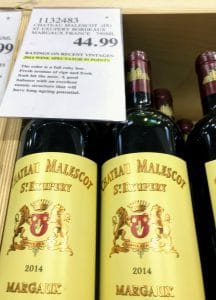
I was really optimistic about the 2014 Malescot-St.-Exupéry but even at $45 it didn’t strike me as a stellar value.
Malescot-St.-Exupéry has been very hit or miss for me. While I’ve enjoyed their work in stellar vintages like 2005 and 2009/10, I’ve been fairly underwhelmed in more average years like 2012 & 2014. Those experiences always tilt me more to a “wait and see” approach with potentially later purchases when the wine hits retail shelves.
With an average price of $55, it’s not that far out of line with 2014 right now though I can see it potentially inching up towards $60 on release if the barrel scores hold true. Glowing critic scores aside, I’m still going to err on my own personal experience and Pass on this offer.
Ch. Prieuré-Lichine (Margaux)
Some Geekery:
The “Prieuré” in Prieuré-Lichine pays homage to the estate’s early history in the 17th century as a vineyard for the Benedictine monks at the Priory of Cantenac. Clive Coates notes in Grands Vins: The Finest Châteaux of Bordeaux and Their Wines that the monks also owned neighboring Ch. Pouget and Ch. Boyd-Cantenac. However, during the French Revolution these ecclesiastical properties were confiscated by the government with the vineyards of Prieuré sold off in pieces to several other estates.
The next century and a half saw several changes in ownership and names until finally in 1951 when Alexis Lichine, the notable Russian writer and French wine expert who wrote Alexis Lichine’s Guide to the Wines and Vineyards of France and his New Encyclopedia of Wines & Spirits, headed a consortium of buyers that purchased the property.
Changing the name to Prieuré-Lichine and benefiting from an influx of capital from Count Lur Saluces, the owner of Chateau d’Yquem, Lichine set about reacquiring old parcels and adding new ones throughout Margaux from neighboring estates like Boyd-Cantenac, Brane-Cantenac, Durfort-Vivens, Ferrière, Giscours, d’Issan, Kirwan and Palmer. Lichine also pioneered promoting tourism in the region, erecting a sign on the D2 highway advertising tasting and cellar door wine purchases available at Ch. Prieuré-Lichine.

The exterior of Prieuré-Lichine.
The estate stayed in the Lichine family until 1999 when it was sold to the negociant Groupe Ballande. The new owners hired Stephane Derenoncourt as consultant and, in 2013, added 7.5 more hectares of vines from a purchase of Ch. Pontet Chappaz–bring the estate’s total to 77.5 hectares (191.5 acres). All the vineyard parcels, scattered throughout various soils types in Margaux, are farmed sustainably. Around 25,000 cases a year are produced.
Critic Scores:
93-94 JS, 92-93 WE, 91-94 VM, 89-92 WS, 88-90 WA
Sample Review:
This is the definition of a wine to buy in an off-vintage. It has the signature of the last few years, but in an early-drinking package. It’s a little oaky and smoky for sure, but handles it well and delivers punch and personality without overstating the case. Ripe damson fruits help to deliver impact, even if the fruit is generally a touch below the exuberance of the last two years. Planted in the vineyard to 50% Cabernet Sauvignon, 45% Merlot, 5% Petit Verdot. (95 points) — Jane Anson, Decanter
Offers:
Wine Searcher 2017 Average: $43
JJ Buckley: No offers yet.
Vinfolio: No offers yet.
Spectrum Wine Auctions: $239.94 for minimum 6 bottles + shipping (no shipping if picked up at Tustin, CA location)
Total Wine: $41.97
K&L: $39.99 + shipping
Previous Vintages:
2016 Wine Searcher Ave: $45 Average Critic Score: 92 points
2015 Wine Searcher Ave: $56 Average Critic Score: 92
2014 Wine Searcher Ave: $51 Average Critic Score: 92
2013 Wine Searcher Ave: $48 Average Critic Score: 89
Buy or Pass?
Despite its lackluster reputation and extreme difficulties, I still regularly make it a habit to try examples from the 2013 vintage whenever I get a chance–either at tastings like the 2016 Union des Grands Crus de Bordeaux (UGC) US Tour or even at restaurants if the bottle price is right.
I make that effort because there is so much you can learn about the mettle of the terroir and winemaking team by tasting the products of troublesome vintages. In great vintages, it’s easy to make great wine but if a wine from a rough vintage makes you raise an eyebrow then take note. That was the case for me at the 2016 UCG tasting where the 2013 Prieuré-Lichine stood out from the pack for its balance and charm in what a difficult year to find either.
The follow up year in 2014 proved even better as that vintage certainly gave the winemakers more to work with and I eagerly purchased futures of the 2015 and (especially) 2016 as the prices remained reasonable. Now seeing the 2017 priced even more attractively (even less than the 2013) makes this an easy Buy for me.
Ch. Lascombes (Margaux)
Some Geekery:
Originally founded by the Durfort de Duras family (of Durfort-Vivens fame), the estate was named after Antoine, Chevalier de Lascombes, who inherited the estate in the mid-17th century. Records from the regisseur (trustee) of Ch. Margaux noted that feudal dues of Lascombes was paid in the form of two barrels of wine each year which the owners of Ch. Margaux would use to top up their barrels with.
In 1925, Lascombes was purchased by the Ginestet family who owned Ch. Margaux and at one point were involved with Cos d’Estournel in St. Estephe, Clos-Fourtet in St. Emilion, Ch. Petit-Village in Pomerol and Durfort-Vivens. During World War II, Allied Forces used the chateau as an army headquarters.
Shortly after purchasing what would become Prieuré-Lichine, Alexis Lichine headed a group of investors that included American banker David Rockefeller to purchase Lascombes in 1952. Lichine actively promoted and tripled production before the estate was sold in 1971 to British brewer Bass Charrington.
In 2001, Lascombes was sold again. This time to an American finance company, Colony Capital, who invested more than $47 million dollars renovating the cellars and building a four story gravity-fed production facility. Alain Raynaud and Michel Rolland were brought in to consult with Yves Vatelot of Chateau Reignac. By the time the estate was sold in 2011 to French insurer La Mutuelle, Rolland was the primary consultant who is still working with the estate today.

Chateau Lascombes.
With 117 hectares (289 acres), Lascombes is one of the largest properties in Margaux and is notable for being dominated by Merlot plantings, accounting for around 50% of the vineyards with 45% Cabernet Sauvignon and 5% Petit Verdot. Around 20,000 cases a year are produced.
The 2017 vintage is a blend of 57% Cabernet Sauvignon, 40% Merlot and 3% Petit Verdot.
Critic Scores:
92-95 WA, 91-94 VM, 90-92 WE, 90-91 JS, 88-91 WS, 90-92 JL, 90-92 Jeb Dunnuck (JD)
Sample Review:
A bit of a drag queen with its fruity character and outgoing nature, the wine is round and flashy. The fruit is ripe and sweet, damp with warm earth, tobacco and licorice. This is the first vintage in recent times made from a Cabernet dominated blend. The wine is aging in 50% new, French oak barrels, which is a choice I hope they stick with, as the wines in the past often suffered from too much oak. — Jeff Leve, The Wine Cellar Insider
Offers:
Wine Searcher 2017 Average: $72
JJ Buckley: $73.94 + shipping
Vinfolio: No offers yet.
Spectrum Wine Auctions: No offers yet.
Total Wine: $71.97
K&L: No offers yet.
Previous Vintages:
2016 Wine Searcher Ave: $82 Average Critic Score: 92 points
2015 Wine Searcher Ave: $92 Average Critic Score: 92
2014 Wine Searcher Ave: $70 Average Critic Score: 91
2013 Wine Searcher Ave: $64 Average Critic Score: 89
Buy or Pass?

A guilty pleasure, perhaps, but few things could top the combination of silkiness and depth that the 2010 Lascombes had.
Lascombes tends to be a very “modernist”, fruit-forward Bordeaux that features lavish oak and can often provoke some of the lush, hedonistic pleasures of a Napa Cab. While it doesn’t always knock me off my socks, I absolutely adored the 2010 vintage that was one
my Top 10 wines at the 2017 Wine Spectator Grand Tour tasting. The estate also did very well with their 2013 and 2014 offerings.
When it’s good, Lascombes is very good but it’s rarely ever screams value. This, coupled with the change in style for this vintage to a Cab-dominant blend, makes it more of a gamble than I’m willing to take for a 2017 so I will Pass.
Ch. Cantenac-Brown (Margaux)
Some Geekery:
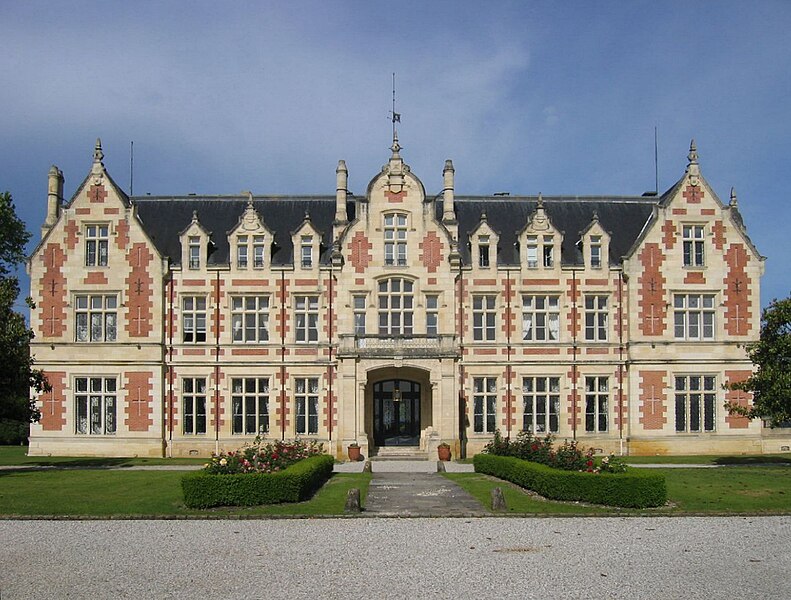
The Tudor style architecture of the chateau at Cantenac-Brown standsout among its peers.
A relatively young estate, Ch. Cantenac was purchased in the early 1800s by the grandfather of Scottish painter John Lewis Brown. A merchant who moved to Bordeaux after the French Revolution, Brown also owned neighboring Boyd-Cantenac and the Pessac-Leognan estate Château Barrière (now Chateau Brown). It was Brown who commissioned the construction of the chateau in its unique Tudor style.
By 1860 it was under the ownership of Armand Lalande, owner of Léoville Poyferré, and would change hands several more times over the next 146 years until it was purchased by the Halabi family in 2006. After acquiring the property from the AXA insurance group, the Halabis hired Jose Sanfins to manage the winemaking and continue the improvements made by Jean-Michel Cazes, Daniel Llose and Christian Seely under AXA.
With 48 hectares (118.6 acres) spread across the commune, the estate includes several parcels that are over 60 years of age. All the vineyards of Cantenac-Brown are farmed sustainably.
The 2017 vintage is a blend of 67% Cabernet Sauvignon and 33% Merlot. Around 11,000 cases a year are produced though the final total in 2017 is likely to be lower due to frost damage.
Critic Scores:
92-93 JS, 90-93 VM, 90-92 WA, 89-92 WS, 89-91 WE
Sample Review:
The vineyard received a bit of frost in 2017 with yields finishing at 35 hectoliters per hectare, whereas normally yields are around 42 hectoliters per hectare. With a larger proportion of Cabernet Sauvignon this year, the blend is 67% Cabernet Sauvignon and 33% Merlot. Deep garnet-purple in color, the 2017 Cantenac Brown leaps from the glass with exuberant notes of cassis, warm plums and black forest cake with touches of violets, dark chocolate, cloves and cigar box plus a waft of lavender. The palate is medium-bodied and firm with fine-grained tannins and tons of freshness, finishing with plenty of black fruit and perfumed layers. — Lisa Perrotti-Brown, Wine Advocate
Offers:
Wine Searcher 2017 Average: $52
JJ Buckley: No offers yet.
Vinfolio: No offers yet.
Spectrum Wine Auctions: No offers yet.
Total Wine: $49.97
K&L: No offers yet.
Previous Vintages:
2016 Wine Searcher Ave: $57 Average Critic Score: 93 points
2015 Wine Searcher Ave: $65 Average Critic Score: 92
2014 Wine Searcher Ave: $47 Average Critic Score: 92
2013 Wine Searcher Ave: $43 Average Critic Score: 89
Buy or Pass?
Cantenac-Brown was another estate that impressed me during the 2016 UGC tasting of the 2013 vintage–and that was my first ever tasting opportunity for them. I didn’t end up buy any of their 2013s and I must confess that I haven’t had an opportunity to revisit them or taste other vintages.
If the price was more compelling I may have been tempted but with an average north of their 2014 and 2013 still out on the market this will be a Pass for me.
More Posts About the 2017 Bordeaux Futures Campaign
Why I Buy Bordeaux Futures
*Bordeaux Futures 2017 — Langoa Barton, La Lagune, Barde-Haut, Branaire-Ducru
*Bordeaux Futures 2017 — Pape Clément, Ormes de Pez, Marquis d’Alesme, Malartic-Lagraviere
*Bordeaux Futures 2017 — Lynch-Bages, d’Armailhac, Clerc-Milon and Duhart-Milon
*Bordeaux Futures 2017 — Clos de l’Oratoire, Monbousquet, Quinault l’Enclos, Fonplegade
*Bordeaux Futures 2017 — Cos d’Estournel, Les Pagodes des Cos, Phélan Ségur, Calon-Segur
*Bordeaux Futures 2017 — Clinet, Clos L’Eglise, L’Evangile, Nenin
*Bordeaux Futures 2017 — Domaine de Chevalier, Larrivet Haut-Brion, Les Carmes Haut-Brion, Smith Haut Lafitte
*Bordeaux Futures 2017 — Beychevelle, Talbot, Clos du Marquis, Gloria
*Bordeaux Futures 2017 — Beau-Séjour Bécot, Canon-la-Gaffelière, Canon, La Dominique
*Bordeaux Futures 2017 — Carruades de Lafite, Pedesclaux, Pichon Lalande, Reserve de la Comtesse de Lalande
*Bordeaux Futures 2017 — Vieux Chateau Certan, La Conseillante, La Violette, L’Eglise Clinet
*Bordeaux Futures 2017 — Montrose, La Dame de Montrose, Cantemerle, d’Aiguilhe
*Bordeaux Futures 2017 — Clos Fourtet, Larcis Ducasse, Pavie Macquin, Beauséjour Duffau-Lagarrosse
*Bordeaux Futures 2017 — Kirwan, d’Issan, Brane-Cantenac, Giscours
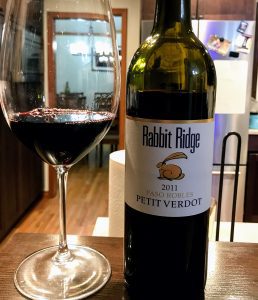


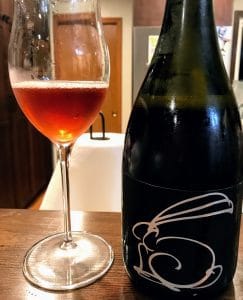

 We are heading to Margaux as we continue our exploration of the 2017 Bordeaux Futures campaign.
We are heading to Margaux as we continue our exploration of the 2017 Bordeaux Futures campaign.







